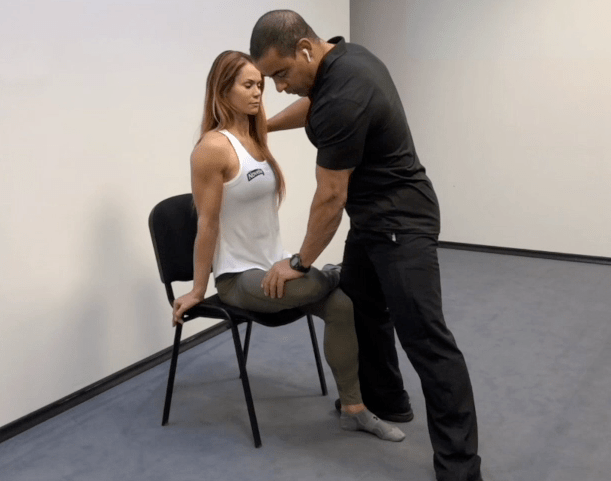On parts 1, 2, 3 and 4, we discussed the planning of the training program, pre-training food, pre-training supplements, and uplifting motivation, respectively. On part 5, I will discuss stretching.
The subject of stretching is very controversial, especially when it is related to the one performed before the training session.
In order to keep things to the point, research and clinical experience have shown that the stretching performed before the training session must be short and dynamic, or better yet, it cannot be static stretching. The type of stretching we teach in Structural Assessment and use with great success before training sessions, is PNF (Proprioceptive Neuromuscular Facilitation).
This is why
A prerequisite to perform static stretching is to be able to relax the central nervous system, which is something you don’t want before a training session. Also, with the static stretching, the impacted structures of the body will reach a new range of motion where there is no strength or muscular activation, and when that happens before a training session, it is actually predisposing the trainee to a possible injury.
On the other hand, PNF is composed by stretches and subsequent contractions in the gained range of motion, which ensures that you will have muscle activation in the new range reached, thus preventing the risk of injury, and giving you a better flexibility.
But why is it important to stretch before a training session? Because the proper execution of the movements and exercises during any training session require optimal ranges of motion in order to ensure the proper mechanics and form, which in the end will decrease and prevent the risk of injury.
For example, if you have a squat centered workout and your ankle flexibility is not adequate to squat all the way down (ass to grass), you might end up having an incomplete range of motion, which won’t lead to optimal gains and most possible to disbalances between the muscles of the quadriceps, which in turn can bring problems in the knees. Also, if you try to get the full range of motion despite the lack of flexibility in your ankles, you will increase the risk of injury of the lower back as well.
The same principle applies to the training of all the other muscle groups, and another example is the proper performance of a shoulder press. If the internal rotators of the shoulder are tight, it will be very difficult to get in to the right starting position for this exercise, which will change the pressing motion, leading again to an increased risk of injury of the joint. And there are dozens of other examples for virtually every muscle group in the human body.
So, do I suggest to stretch before a training session? Yes, I do! Find the structures that need an improved flexibility for the training session to be executed (again, something we teach in Structural Assessment), and perform PNF stretching on them. You can be sure that the progress from session to session will improve, and also the health of the joints in the body.
If you want to learn how to improve flexibility along with strength in a matter of seconds, the class Instant Strength and Mobility is a must. It won’t only make you save a lot of time, but will also increase your reputation because you’ll be able to produce better and faster results.
A final note:
I’m not against static stretching and actually I recommend it about 6 hours before or after your training session, because it helps improving flexibility in the long term, and is also a very good Yin activity.
Get the flexibility needed and enjoy better training sessions!
Coach Carlos Castro

